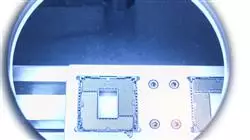University certificate
The world's largest faculty of information technology”
Introduction to the Program
Learn about the current state of computer vision as a discipline and delve into its applications with this Postgraduate certificate”

Artificial intelligence and other associated areas such as Machine Learning are the present and the future of technology. They have provided numerous solutions to complex fields such as healthcare, facilitating all kinds of medical processes. Within the field of AI, computer vision emerges as its optical branch, as it is responsible for processing, in an automated way, the visual information it receives. It is, therefore, an area with enormous prospects for the future.
This Postgraduate certificate in Computer Vision, Applications and the State of the Art focuses on the current state of this technological discipline and delves into its numerous applications. Therefore, throughout this program the computer scientist will be able to learn about the latest developments in aspects such as image indexing, illumination systems, satellite image analysis or its commercial applications.
And it will do so with a highly qualified teaching staff, an online teaching system that adapts to the circumstances of each student and content presented in multimedia format, such as practical exercises, video lessons, master classes or interactive summaries.
Successfully apply computer vision to your projects thanks to what you will learn in this program”
This Postgraduate certificate in Computer Vision, Applications and the State of the Art contains the most complete and up-to-date educational program on the market. Its most important features are:
- The development of case studies presented by experts in computer science and computer vision
- The graphic, schematic, and practical contents with which they are created, provide scientific and practical information on the disciplines that are essential for professional practice
- Practical exercises where self-assessment can be used to improve learning
- Its special emphasis on innovative methodologies
- Theoretical lessons, questions to the expert, debate forums on controversial topics, and individual reflection assignments
- Content that is accessible from any fixed or portable device with an Internet connection
Artificial intelligence is the future: specialize in one of its most important branches and progress professionally”
The program’s teaching staff includes professionals from the sector who contribute their work experience to this educational program, as well as renowned specialists from leading societies and prestigious universities.
The multimedia content, developed with the latest educational technology, will provide the professional with situated and contextual learning, i.e., a simulated environment that will provide immersive education programmed to learn in real situations.
This program is designed around Problem-Based Learning, whereby the professional must try to solve the different professional practice situations that arise during the academic year. For this purpose, the student will be assisted by an innovative interactive video system created by renowned and experienced experts.
This Postgraduate certificate is what you were looking for. Don't wait any longer and enroll"

With this program, you will combine Machine Learning with computer vision to create powerful image processing tools"
Why study at TECH?
TECH is the world’s largest online university. With an impressive catalog of more than 14,000 university programs available in 11 languages, it is positioned as a leader in employability, with a 99% job placement rate. In addition, it relies on an enormous faculty of more than 6,000 professors of the highest international renown.

Study at the world's largest online university and guarantee your professional success. The future starts at TECH”
The world’s best online university according to FORBES
The prestigious Forbes magazine, specialized in business and finance, has highlighted TECH as “the world's best online university” This is what they have recently stated in an article in their digital edition in which they echo the success story of this institution, “thanks to the academic offer it provides, the selection of its teaching staff, and an innovative learning method aimed at educating the professionals of the future”
A revolutionary study method, a cutting-edge faculty and a practical focus: the key to TECH's success.
The most complete study plans on the university scene
TECH offers the most complete study plans on the university scene, with syllabuses that cover fundamental concepts and, at the same time, the main scientific advances in their specific scientific areas. In addition, these programs are continuously being updated to guarantee students the academic vanguard and the most in-demand professional skills. In this way, the university's qualifications provide its graduates with a significant advantage to propel their careers to success.
TECH offers the most comprehensive and intensive study plans on the current university scene.
A world-class teaching staff
TECH's teaching staff is made up of more than 6,000 professors with the highest international recognition. Professors, researchers and top executives of multinational companies, including Isaiah Covington, performance coach of the Boston Celtics; Magda Romanska, principal investigator at Harvard MetaLAB; Ignacio Wistumba, chairman of the department of translational molecular pathology at MD Anderson Cancer Center; and D.W. Pine, creative director of TIME magazine, among others.
Internationally renowned experts, specialized in different branches of Health, Technology, Communication and Business, form part of the TECH faculty.
A unique learning method
TECH is the first university to use Relearning in all its programs. It is the best online learning methodology, accredited with international teaching quality certifications, provided by prestigious educational agencies. In addition, this disruptive educational model is complemented with the “Case Method”, thereby setting up a unique online teaching strategy. Innovative teaching resources are also implemented, including detailed videos, infographics and interactive summaries.
TECH combines Relearning and the Case Method in all its university programs to guarantee excellent theoretical and practical learning, studying whenever and wherever you want.
The world's largest online university
TECH is the world’s largest online university. We are the largest educational institution, with the best and widest online educational catalog, one hundred percent online and covering the vast majority of areas of knowledge. We offer a large selection of our own degrees and accredited online undergraduate and postgraduate degrees. In total, more than 14,000 university degrees, in eleven different languages, make us the largest educational largest in the world.
TECH has the world's most extensive catalog of academic and official programs, available in more than 11 languages.
Google Premier Partner
The American technology giant has awarded TECH the Google Google Premier Partner badge. This award, which is only available to 3% of the world's companies, highlights the efficient, flexible and tailored experience that this university provides to students. The recognition as a Google Premier Partner not only accredits the maximum rigor, performance and investment in TECH's digital infrastructures, but also places this university as one of the world's leading technology companies.
Google has positioned TECH in the top 3% of the world's most important technology companies by awarding it its Google Premier Partner badge.
The official online university of the NBA
TECH is the official online university of the NBA. Thanks to our agreement with the biggest league in basketball, we offer our students exclusive university programs, as well as a wide variety of educational resources focused on the business of the league and other areas of the sports industry. Each program is made up of a uniquely designed syllabus and features exceptional guest hosts: professionals with a distinguished sports background who will offer their expertise on the most relevant topics.
TECH has been selected by the NBA, the world's top basketball league, as its official online university.
The top-rated university by its students
Students have positioned TECH as the world's top-rated university on the main review websites, with a highest rating of 4.9 out of 5, obtained from more than 1,000 reviews. These results consolidate TECH as the benchmark university institution at an international level, reflecting the excellence and positive impact of its educational model.” reflecting the excellence and positive impact of its educational model.”
TECH is the world’s top-rated university by its students.
Leaders in employability
TECH has managed to become the leading university in employability. 99% of its students obtain jobs in the academic field they have studied, within one year of completing any of the university's programs. A similar number achieve immediate career enhancement. All this thanks to a study methodology that bases its effectiveness on the acquisition of practical skills, which are absolutely necessary for professional development.
99% of TECH graduates find a job within a year of completing their studies.
Postgraduate Certificate in Computer Vision, Applications and the State of the Art
.
Dive into the fascinating world of Machine Vision with our Postgraduate Certificate in Machine Vision, Applications and State of the Art from TECH Global University. Take advantage of the flexibility of our online classes to explore this cutting-edge field and expand your knowledge from anywhere and at your own pace. Online classes are the ideal way to access quality education without geographical restrictions or time constraints. At TECH Global University, we are proud to offer an innovative teaching program that fits your lifestyle. Our Postgraduate Certificate program will give you the opportunity to immerse yourself in the exciting world of machine vision and discover its wide range of applications in different industries. With this academic program, you will immerse yourself in the theoretical and practical fundamentals of machine vision, exploring algorithms, techniques and methodologies used in image processing and visual information extraction. You'll learn how to develop computer vision systems and apply them in fields as diverse as medicine, robotics, security and more.
They'll help you develop computer vision systems and apply them to fields as diverse as medicine, robotics, security and more.
Learn about computer vision at the best computer science faculty
.
The benefits of our online classes are numerous. You will have access to up-to-date study materials, interactive lectures and multimedia University reCourse that will allow you to understand and apply machine vision concepts in a practical way. In addition, you will have the support of Postgraduate Diplomas in the field, who will guide you through every step of the learning process and answer your questions to help you achieve your educational goals. TECH Global University is proud to have a highly qualified faculty with extensive experience in computer vision. They will share with you their knowledge and experience, providing you with a comprehensive and updated training in this exciting technological field. Don't miss the opportunity to delve into the exciting field of machine vision - enroll in our Postgraduate Certificate in Machine Vision, Applications and State of the Art at TECH Global University and take the first step towards a successful career in this cutting-edge discipline!







